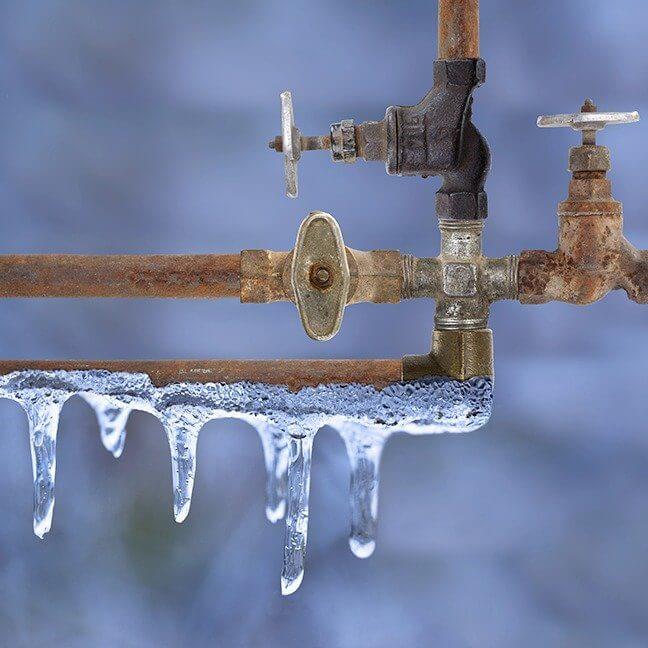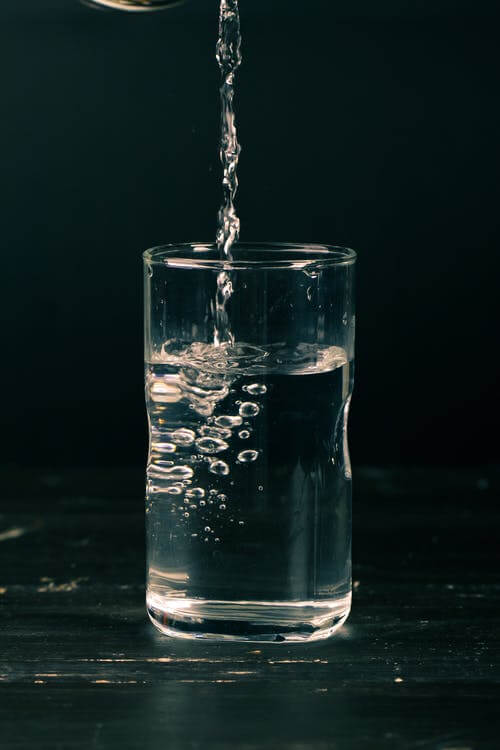Now’s the time to prepare plumbing for winter. We all know winter in Waukesha WI and the Lake Country is harsh and seems to last forever. Ice and snow are a sure thing. Frozen pipes, damaged well pumps and interrupted water flow need not be. With advanced planning you can take steps to avoid a catastrophe using your plumber Waukesha offers. Protecting your water delivery system safeguards your family. Taking steps now provides peace of mind, too, and that’s worth a lot, right?
If you have a cottage or summer home that you won’t visit until spring, winterization means much more than just prepping your rural location home. You need to do a lot more for true winterization. For your home’s private water well and water supply system, the process is less demanding but no less valuable.

Begin the winter water prep process for your home with these easy steps:
- Disconnect hoses and sprinkler systems – an outdoor hose filled with water will freeze. Freezing damages the hose and the ice can back up into the connecting pipe and crack it.
- Shut off outdoor faucets – open the faucet and let it run while you shift the shutoff value. Drain all the water out of the pipe – if you don’t it can freeze and cause damage later.
- Cover outside faucets – the outside hose connection, called a “hose bib,” can be insulated with a special cover to prevent heat from escaping through the wall.
There are WiFi and BlueTooth connected thermostats and sensors that will alert you to drastic changes in temperature anywhere inside you home. You can get an email, text or alert on your phone!
Change The Layout To Prepare Plumbing For Winter
If you’ve had plumbing problems in your home during past winters, now’s the time to consider renovating the physical layout to avoid future damage. You don’t have to knock down or build walls. A few minor changes can have a big impact. Consider:
- Insulate pipes and open spaces – do you have exposed pipes in an unheated crawl space, attic or garage? Wrapping pipes with foam insulation is an easy answer, especially when insulating the surrounding space isn’t an option. But pipe insulation doesn’t do much in extreme cold – it just holds the problem off for a while, not for good.
- Add heating cables – heating cables with a built-in thermostat to sense the temperature of the pipe and surrounding area – heating up when the temp goes too low – are an excellent solution, especially when combined with area-wide insulation. A major drawback: these cables must be plugged into an electrical outlet.
- Seal openings – use expandable foam to seal cracks or holes where cold air leaks in around the building’s rim joists (where the structure sits on the foundation). And add insulation between the floor joists above crawl spaces or in attics. The goal is keeping cold outside air where it belongs – outside! Anywhere cables, wires or pipes pass into the building from outside needs attention.
Does your unheated garage butt up against an area of the house with water pipes? Are there exposed pipes in the garage? Insulating walls and ceilings of attached garages not only protects nearby plumbing fixtures in winter, it can reduce a home’s heating bill. Don’t forget insulating your garage door, too. An insulated garage door keeps the interior a few degrees warmer all winter and that may be the difference between comfort and disaster.

Monitor Severe Weather Forecasts
When the local forecasters are warning of extreme cold ahead there are additional moves you can make “just in case.” Keeping an eye on what’s coming is always wise when it comes to Wisconsin’s weather, isn’t it?
With rising costs of energy, making the most of all your resources is a must. There is a lot of debate on how to set a thermostat to keep your home warm enough without using too much precious energy. That may be more of a worry this year than it has been in several years. When it comes to protecting your plumbing this winter, especially when there’s a severe cold snap in the forecast, overriding technology makes sense.
Modern programmable thermostats are said to save energy and dollars. But keeping your home’s thermostat set at an even temperature all the time reduces the risk of sudden changes impacting pipes, pumps and faucets. A shift of a few degrees can make a dangerous difference. Is it worth the risk for a day or two?
There are two common precautions to guard against frozen pipes inside your house:
- Leave a faucet running – Just a trickle acts as a relief valve to reduce pressure if a pipe does start to freeze and will reduce the changes of pipes cracking or bursting. It just takes a slow trickle to add a measure of safety. WARNING: don’t leave a faucet running if its drain is in an area that’s likely to freeze. A frozen drain can crack pipes or it might cause the sink to overflow.
- Open cabinet doors – when there’s a serious risk of extreme temperatures, keep kitchen and bathroom cabinets open around sinks. Allow as much of the warm air from the surrounding room to reach the pipes as possible.
Rely Upon Pros – Prepare Plumbing For Winter
Schoenwalder Plumbing’s skilled, licensed plumbers are ready to review your home’s plumbing system from top to bottom. We’ll provide expert advice and solutions to keep it running at peak efficiency.
Don’t get caught unprepared for winter? Call Schoenwalder Plumbing at 262-542-7908, or email us and make an appointment to review your concerns. Our certified plumbers can recommend actions and install an upgrades or make repairs. Safeguarding water systems is worth the time and effort, isn’t it? It’s a commitment to the wellbeing of your home and family. Rely upon Schoenwalder Plumbing to prepare plumbing for winter in Waukesha WI and the Lake Country.
